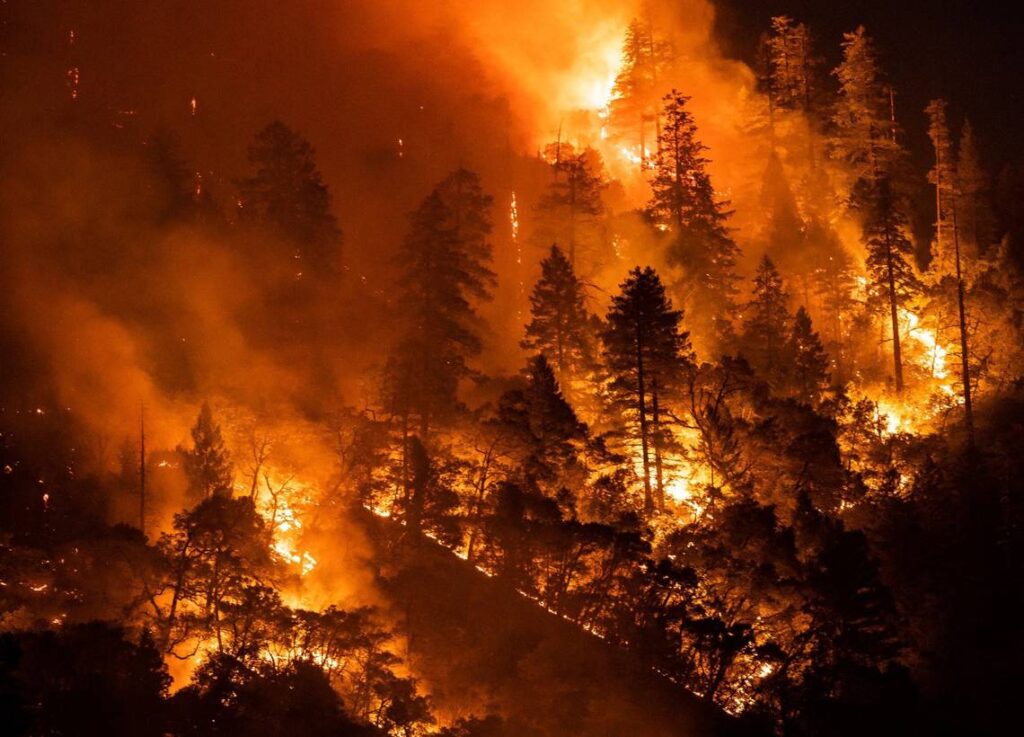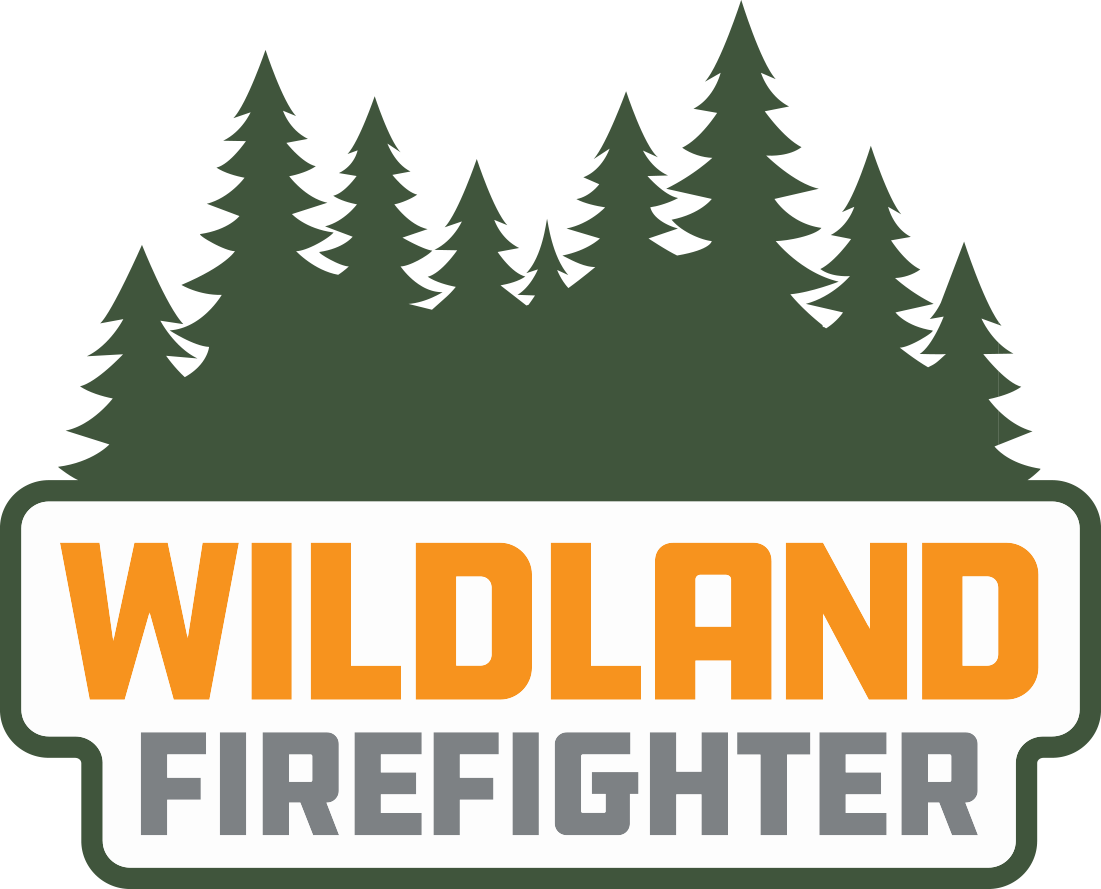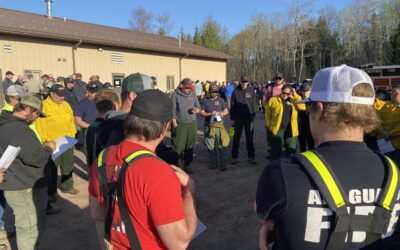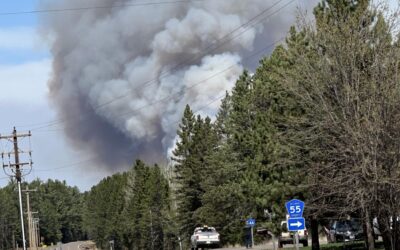
The Dixie Fire burns near Highway 70 on July 21, 2021, in the Feather River canyon in Plumas County. The blaze is the largest-single source wildfire in California history.
SACRAMENTO, Calif. — California is on the cusp of wildfire season, which experts warn could be worse than usual.
“Outlooks for Northern and Southern California both paint a picture of a significant increase — (a) pretty widespread, elevated risk of large fires come August,” said John Abatzoglou, a climatologist at UC Merced.
On Thursday, the National Weather Service’s Sacramento office issued its first fire weather watch of the season.
The risk of wildfires is expected to be especially high with gusty winds and low humidity set to sweep across the Sacramento Valley on Sunday and Monday.
According to the National Interagency Fire Center’s wildfire outlook, there is “above normal” potential for significant fires across much of California from June through August.
Dry weather conditions paired with ample fuel could cause major wildfires in the months ahead, according to Abatzoglou.
However, it’s difficult to pinpoint when wildfire season begins and how bad blazes could be.
“A lot of the fire season is sort of written in California during the months of August and September, depending on triggers regarding dryness and precipitation,” Abatzoglou said.
When does wildfire season start in Northern California?
In Northern Californria, wildfire season typically starts in June or July and ends in November, according to the Western Fire Chiefs Association.
However, California is “approaching a year-round fire season” as climate change and drought conditions shift environmental norms, the association said.
Fire season tends to wind down when the state gets enough heavy rainfall to dampen possible fuels such as grass, leaves, pine needles, ferns and tree moss, according to the Western Fire Chiefs Association.
When is wildfire season in Central and Southern California?
Historically, Central and Southern California experiences peak fire season from May through October, the Western Fire Chiefs Association said.
However, fire season is a never-ending phenomenon now, said Toni Davis, the public information officer for the California Department of Forestry and Fire Protection’s San Luis Obispo unit.
“We’re dealing with wildfires throughout the year,” she said. “Most of the time, they’re prevalent during the hotter and drier times of year, but with drought and things that have happened in years past, it’s very weather dependent.”
Strong Santa Ana winds usually increase in late fall and winter, elongating fire season past the summer, according to Scott Stephens, a professor of fire science at UC Berkeley.
These extreme winds and intensely dry conditions can turn Southern California into a matchbox with “the most extreme fire danger of almost anywhere on the planet,” he said.
What could wildfire season look like this year?
In the summer of 2025, wildfires in California are projected to be average to more severe depending on where you live in the state, according to the National Interagency Fire Center.
In the upper half of the state, the potential for significant blazes will ramp up in June, July and August.
That’s when conditions are expected to be “near to above normal,” the center said.
Long periods of hot weather and “critically low fuel moisture” are expected mid-summer in interior parts of Northern California, according to the center’s report.
“I think Northern California, at least right now, feels like it’s going to be potentially an average year,” Stephens said, but “an average year still could be very bad.”
Stephens said conditions are expected to be more dire in the southern half of the state due to a lack of precipitation in the winter and spring.
According to the fire center’s report, Central and Southern California received “significantly below average precipitation” since the water year began Oct. 1.
April was also much drier than normal, the center said, which could lead to more wildfires in the months ahead.
As of Thursday, May 15, portions of the Central Valley were experiencing moderate drought conditions, while severe and extreme drought conditions could be found in parts of Southern California, according to the U.S. Drought Monitor.
Dry conditions can make it “even more challenging and more difficult” to suppress wildfires, Stephens told The Sacramento Bee. “So I would expect Southern California, unfortunately, to have a pretty active fire season.”
What is likely to cause wildfires this summer?
The majority of fires are started by humans, Davis said.
Downed power lines, camp fires and vehicle mechanical errors are all common ways sparks can catch fire and quickly transform into major blazes, she said.
“As the grass starts to die, everyone needs to do their part and pay attention to that,” David said. “Those are the types of what we call fuel, or vegetation, that is very susceptible to anything that is heated up.”
Lightning strikes can also cause widespread fire activity in California,Abatzoglou said.
In 2025, a combination of heat waves, dry wind events and occasional lightning could be a “catalyst for kicking the fire season off,” he warned.
Stephens said storms can act as a particularly dangerous fire starter because lightning bolts can spark several blazes simultaneously.
“You can have 300 to 400 fires in one weekend, and no fire suppression system is able to take care of that in that amount of time,” he said.
How to prepare and stay safe during wildfire season
Precautionary measures can be taken before a major fire sparks.
According to ReadyforWildfire.org, a resource guide from the California Department of Fire and Forestry , your home can catch on fire from flying embers, direct flames from a fire or nearby burning home and radiant heat from burning plants and buildings.
You can retrofit your California home with more fire-resistant materials by opting for metal, clay or tile materials for your roof.
Sealing off gaps between shingles and removing leaves and debris from your roof also helps decrease the risk of wildfire damage, Cal Fire said.
Cal Fire recommends creating an ember-resistent zone by removing any combustible items within 5 feet of your house. While not legally required, the agency said this key prevention effort can keep sparks from spreading to your home.
Davis advised Californians to download mobile apps that track fires, such as Pulse Point or Watch Duty, to get emergency alerts in real time about developing wildfires near where you live.
You can also create an evacuation plan that includes escape routes by foot and car, and make an emergency supply kit.
Is my California home prone to to wildfires?
You can see which areas are prone to wildfires with an online map from Cal Fire.
The interactive graphic allows you to enter your address and see whether you live in a fire-prone area.
____
©2025 The Sacramento Bee. Visit at sacbee.com. Distributed by Tribune Content Agency, LLC.



